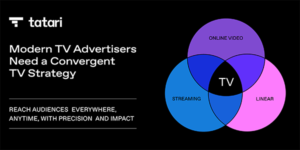Friday Forecast: Five Powerful Reasons Why Direct Response Television Remains Relevant Today
Celebrity fitness trainer Gillian Michaels promotes SodaStream, a healthier alternative to sugary soft drinks. Photo: Bluewater Media.
Direct response television (DRTV) remains a powerful weapon that every marketer should consider in their arsenal. Despite increasing media fragmentation, increased competition for advertiser dollars and a general sense that traditional linear TV is in decline, DRTV still leverages the most mass of mass media and has powerful advantages that other forms of marketing simply do not enjoy. Here are five compelling reasons why DRTV remains relevant and worthy of any marketer’s attention:
1. DRTV Affords the Luxury of Time.
Traditional image-driven TV commercials are typically 15 to 30 seconds in length, whereas DRTV leverages 60 seconds, two minutes, five minutes and even program length ads in the form of infomercials that usually run 28 minutes and 30 seconds. This extra time gives marketers the luxury of a bigger canvas that enables them to tell a more engaging, richer story about their product or service. It allows the advertiser to go deeper in explaining what is truly unique and special about what they have to offer, and that education helps push prospects further down the sales funnel. Another way to look at it is that, amid a world of infinite choice and distractions, the longer lengths of DRTV simply allow a marketer more seconds (and opportunities) to catch leads.
2. DRTV Media Is Affordable and Flexible.
DRTV runs in time periods that remain unsold after general advertisers have contracted for their schedules with national networks and their local affiliates. Unlike those image-driven advertisers, DRTV advertisers run with no audience guarantee, because their success is measured by response in the form of leads, web traffic, foot traffic and sales. Because networks and stations do not have to promise a certain number of eyeballs, they discount the airtime heavily — to the tune of as much as 50 percent or more over what a general advertiser would pay with the audience guarantee. Because of this discount, DRTV advertisers typically run in broad daypart rotations versus specific programs. Despite misperceptions among some, DRTV does not just run in overnight time periods, but in virtually every daypart across every day of the week.
3. DRTV Is Measurable.
Rather than measuring “success” based upon Nielsen ratings, DRTV advertisers do not solely gauge success based upon such traditional metrics as target rating points and reach and frequency. Instead, performance-based marketers look at leads, web traffic and sales. What is emphasized depends upon the mechanics of the ad and what the advertiser’s objectives are. For example, one advertiser might use a toll-free number (TFN) and count inbound calls, while another might forego a TFN altogether and measure a spike in unique visitors to their website. Yet, another might use brick-and-mortar retail tags to drive foot traffic to a particular retail partner’s location(s). Unique TFNs, URLs and incentive codes are still other ways response can be measured. Regardless of the scenario, the objective is to measure the cause and effect of an ad, both in immediate and longer-tale terms.
4. DRTV Builds Brands.
The perception that DRTV is solely the mainstay of As Seen On TV products or “yell and sell” pitchmen is ridiculous. DRTV has been employed over the past 25 years by mainstream, best-of-class brands in every category, including Apple, Char-Broil, Home Depot, Microsoft, Philips, SodaStream, and Volvo. In today’s hyper-competitive environment, it empowers brands to break through the clutter, and incite curiosity that will inspire prospects to learn more online or at traditional retail. Furthermore, it has been a powerful catalyst that has created brands, such as OxiClean, Proactiv, and SharkNinja. In many instances, such brands will start out selling direct-to-consumer, which then fuels demand at retail where they become staples and secure coveted, enduring shelf space.
5. DRTV Drives All Channels.
While DRTV can be a profit center or act as a vehicle for partial or full self-funding advertising by way of its ability to provide a direct ROI, it also helps to drive sales across all channels, including online, print and retail. Think about it: consumers now engage when and where they want, but if they have been compelled by your pitch or have a better understanding of what sets you apart, when they go to their channel of preference, you are going to have a leg up. Oftentimes, for every unit of a product sold on a direct basis, exponential sales that can range from as much as three to 15 times the direct sales will occur in other channels, such as brick-and-mortar retail. And let’s face it, in many big box and club membership stores, consumers are left to their own devices to make a purchase decision. If they have knowledge when they spot your item, how can that not be a decided advantage?
Of course, any video assets created for DRTV can be leveraged in a variety of ways, from online to in-store displays. With so many consumers webrooming — that is looking up information on products prior to going to physical retail — and showrooming — that is doing essentially the same thing in the retail aisle using a smartphone to get more information — these advertisements can serve additional, persuasive purposes. As the entire DRTV industry has matured, approaches have become more sophisticated, mainstream and ubiquitous. The one thing that hasn’t changed is the effort to compel audiences to take a specific action; one that is measurable and that every marketer can benefit from. The question is: what action will you, as a marketing professional, take to leverage the power of this singular medium to achieve your ends? DRTV operators are standing by.



